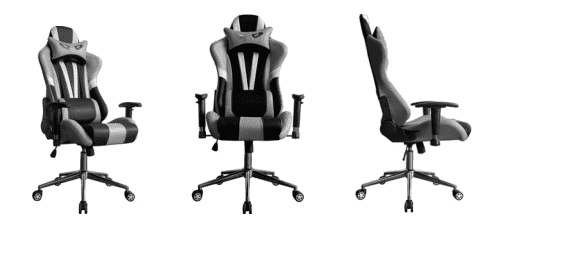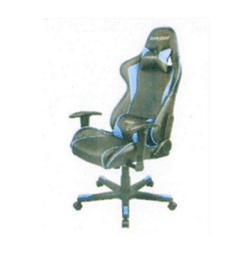SUCCESS OF THE LAW FIRM IN THE COURT OF THE EUROPEAN UNION
Our law firm had the opportunity to represent the applicant for a declaration of invalidity of the Community design in the proceedings before the EUIPO. Board of Appeal examined our client’s application in his favor, annulling our opponent’s Community design. As a result of our opponent’s complaint to the General Court of the European Union, the judgment of the General Court (Second Chamber) of 18 May 2022 in case T-256/21 was issued, dismissing the complaint in its entirety, thus upholding the decision of the Board of Appeal of EUIPO in force.
THE SUBJECT MATTER OF THE CASE FOR THE CANCELLATION OF THE COMMUNITY DESIGN
In a situation where a Community design is registered and enjoys formal protection, in order to prevent the holder of this right from using this only apparent right, which in fact should never have been granted to the entrepreneur, it is possible to file an application for invalidation of the Community design pursuant to Art. 25 of the Regulation on Community Designs. In most cases that we encounter in our practice, the proper basis for annulment will be Art. 25 (1) (b) of the Regulation, i.e. failure to meet the condition of novelty and individual character of the design.
The design is considered to be new if the identical design has not been made available to the public by third parties or by the rightholder himself before the date of filing the application for registration of the design. Therefore, if a person who is entitled to a Community design in the form of, for example, an office chair, produced and sold this chair before filing it with EUIPO, the design does not meet the condition of novelty. However, it should be remembered that there are some exceptions to the above. In particular, it is permissible for the applicant to disclose the design within 12 months preceding the submission of the application. Therefore, if the entrepreneur applied for registration on 01/01/2022, and the goods were issued by him on 01/01/2021, the condition of novelty has not been eliminated and the design can effectively benefit from protection.
The issue of individual character is a bit more problematic and requires the lawyer to carefully gather evidence, prepare for the case, and sometimes even consult design experts. Indeed, a design is considered to be individual in nature if the overall impression it produces on the informed user differs from that of any previous design. Therefore, in the case of an application for a declaration of invalidity, it must be shown that there were designs on the market that resembled the design for which we are applying for a declaration of invalidity. It is important, however, that not every level of similarity will be sufficient to recognize that the design does not have an individual character. The point is for the tested design as a whole to give the impression that it is nothing original, and the solutions used in it have been present on the market for a long time. The appropriate point of reference is also the scope of the pattern creator’s creative freedom – that is, determining whether the pattern creator was limited in modeling the form, color and ornamentation of the pattern. If the creator was in fact limited in action, then even slight differences between the examined and the previous pattern will suffice to state the existence of an individual character.
Below we present declared invalid design (black and grey colours) and earlier design (black and blue colours).


DEGREE OF FREEDOM BY A CREATOR OF A COMPUTER GAMING CHAIR
In our case, the subject of the study was limited to the individual character of a chair (armchair) for computer games, the so-called a gaming chair. The complainant argued that the chair was in fact a racing gaming chair, which had its particular bucket-shaped structure, which limited the scope of the designer’s freedom. The above argument was not supported by the General Court, and the question of the existence of a specific category of goods to be distinguished into a narrower category from the concept of ‘computer game chairs’ was considered unsubstantiated by objective reasons.
The court found, following the Board of Appeal, that in the case of computer gaming chairs, the creator’s freedom is not significantly limited. The Chamber considered that the freedom of the creator when developing chairs for computer games is limited only to the extent that these chairs should include a seat, backrest and armrests. However, as regards the form, shape and size of the chair, the configuration of its elements, materials, colors, ornaments and patterns, the freedom of the designer is not limited, so it should be considered that later chairs should be clearly different from the earlier chairs in order to be allowed to meet the condition of individual character. It is necessary to ensure the absence of “deja vu” among recipients familiarizing themselves with the studied pattern.
WHO SHOULD HAVE A COMMUNITY DESIGN?
An industrial or community design is an industrial property right that is most often used by entrepreneurs from the jewelery, furniture, toys and clothing industries. This right allows you to obtain an absolute right of 25 years, which may be easier to enforce than copyright law. Not every product of work, even made by a person with an artistic education, will be subject to copyright and be given protection. That is why sometimes, in the event of strong competition on the market, it is worth investing time and resources in obtaining the right to an industrial (or Community) design, in order to guarantee the exclusivity of a specific product and the possibility of prohibiting its production and sale by others.
WE SPECIALIZE IN INDUSTRIAL PROPERTY LAW
WE REPRESENT OUR CLIENTS IN REGISTERING COMMUNITY DESIGNS, FILING FOR DECLARATION OF INVALIDITY OF A DESIGN ADN RESPRESENT OUR CLIENTS IN ANY OTHER CASES REGARDING RIGHTS TO A DESIGN
CALL US
+48 (58) 716 71 68
WRITE US
